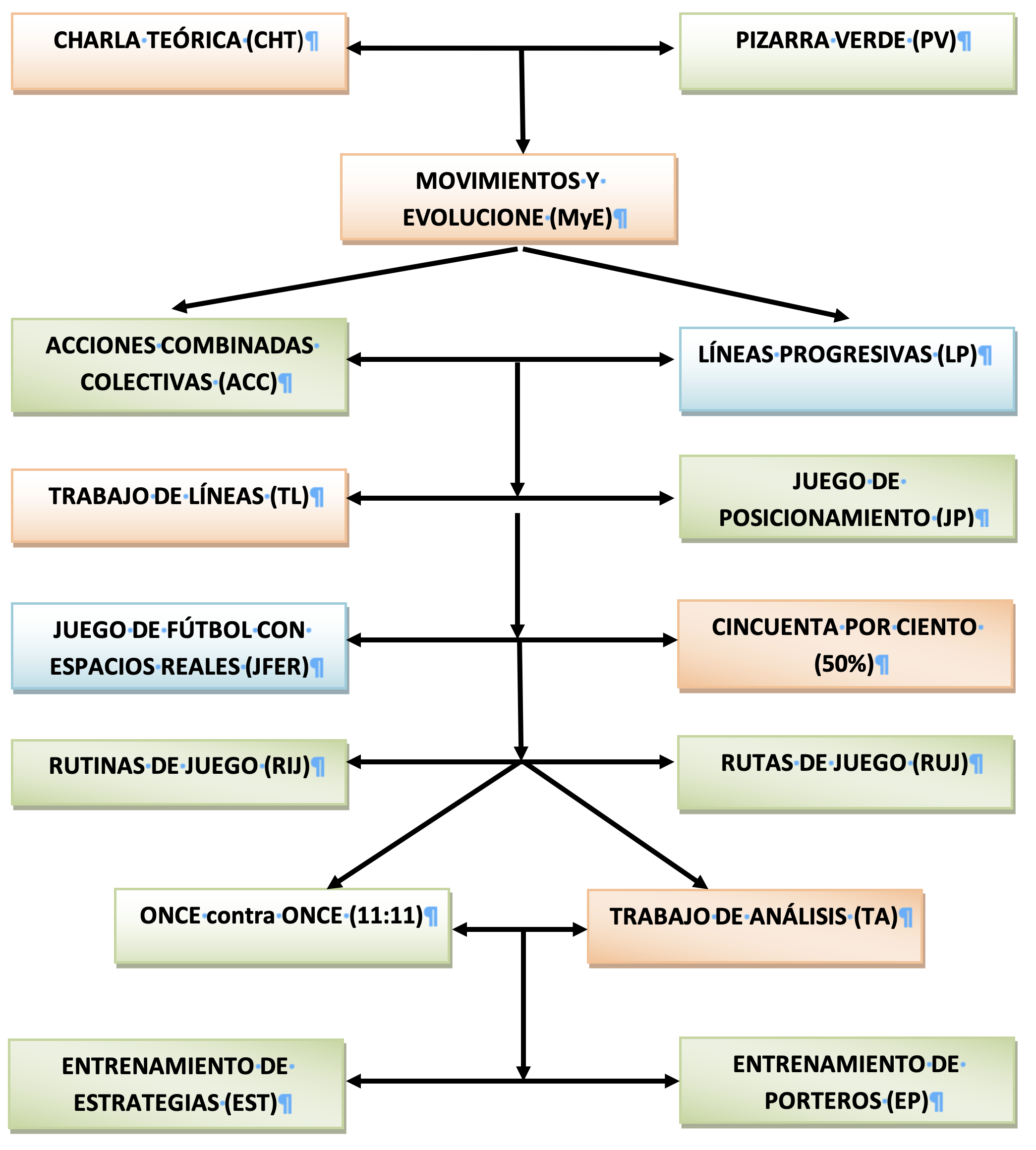Choice of didactic form
It is obvious that each trainer must determine the most appropriate FD, the variants in it, and even the combinations of different FDs to be used in the same training in relation to:
- The objectives to work on.
- The characteristics of its players.
- The level of learning they are at.
- The quantity and quality of the players available in training.
- The spaces available in each session.
- The circumstantial aspects that condition the session (mood, results obtained, etc.).
- The physical loads expected for the session.
- Etc.
Let's see an example of some aspects and / or characteristics to be developed, which allow progression in 5 of the FD's exposed:
THEORETICAL TALK (CHT) |
|
LINE WORK (TL) |
|
POSITIONING GAME (JP) |
|
FIFTY PERCENT (50%) |
|
FOOTBALL GAME IN REAL SPACES (JFER) |
|
LOGICAL PROGRESSION in the USE OF THE FD's for the improvement of the COLLECTIVE GAME (*)


